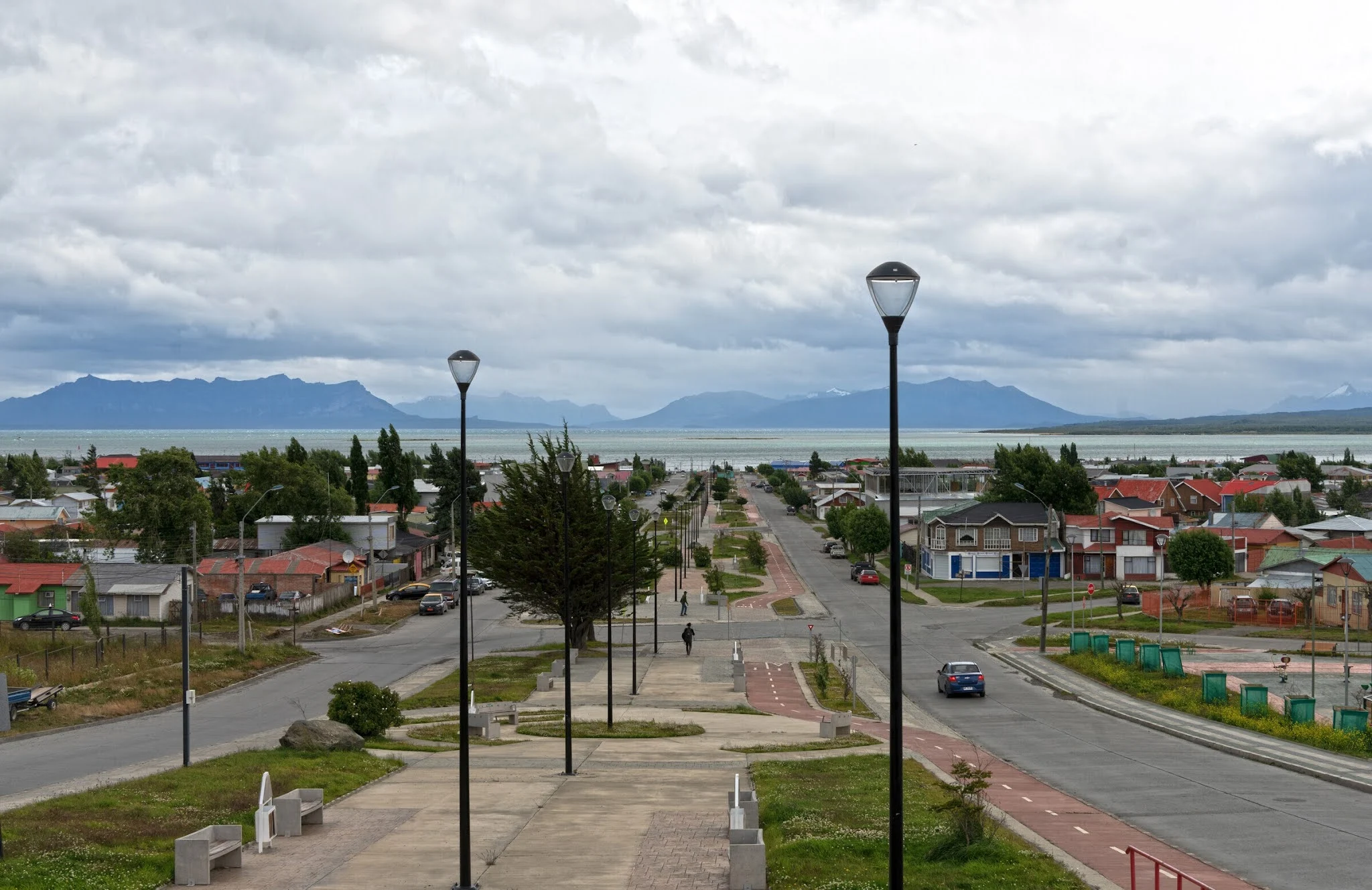Puerto Natales is a small port city in southern Chile, the administrative center of the province of Ultima Esperanza, which is part of the Magallanes and la Antarctica-Chilena region (Spanish Region de Magallanes y de la Antartica Chilena). The town with a population of about 20 thousand people is located on the shores of the Ultima Esperanza Bay (Spanish Bahía de Ultima Esperanza), 247 km from Punta Arenas.
 |
| Puerto Natales Chile |
The city is connected by highways with Punta Arenas and the Argentine province of Santa Cruz. 6 km away is the airport (Spanish Aeropuerto de Puerto Natales), serving local airlines.
History
In the pre-Columbian era, the area of today's Puerto Natales was inhabited by the Indian tribes of the Alakaluf (Spanish Alacaluf), Cavescars (Spanish Kawesqar) and Tehuelche (Spanish Tehuelche), who were engaged in hunting, fishing and gathering. The first European to explore this area was Juan Fernandez Ladrillero (Spanish: Juan Fernandez Ladrillero; 1495-1582), a Spanish conquistador, navigator and traveler who in 1557 was looking for the Strait of Magellan (Spanish Estrecho de Magallanes).
"Ultima Esperanza" is a beautiful name for the bay and the entire province, of which Puerto Natales became the center, in translation it sounds rather bleak: "the last hope." The story of its appearance is connected with Juan Ladrillero, who got lost here, who lost hope of finding the western passage to the Strait of Magellan among the tangled water labyrinths of numerous fjords. The sailor's hopes this time remained unrealizable. But in the places where Puerto Natales is now located, sailors found fresh water and managed to replenish supplies. Ladrillero had to turn back, however, the navigator returned here the following year and at the end of July 1558 successfully entered the coveted Strait of Magellan from the west.
The harsh shores, inhabited by warlike natives, did not interest the Spaniards as territories for colonization; in the historical chronicles over the next 3 centuries, no mention of Europeans visiting these lands is found.
 |
| Puerto Natales Chile |
In 1830, a British hydrographic expedition under the command of Phillip Parker King (1791-1856), a British admiral and explorer, visited the godforsaken lands. Reconnaissance expeditions came here until the end of the 19th century, marking the beginning of the development of this cold land.
Interest in the region has increased since 1870, after the traveler Santiago Zamora, better known as Baquena Zamora, ventured to explore the mountainous part of Patagonia. He discovered in the area of the current Torres del Paine National Park large herds of llamas and wild horses unknown to science, endless emerald valleys, turquoise lakes, blue glaciers and crystal rivers. The Patagonian Sheep Boom soon began, attracting flows of immigrants to the region, who were mainly engaged in sheep breeding.
Against the background of the rise of sheep breeding and population growth, there was an urgent need to build a port for the export of products, and in May 1911 the Chilean authorities decided to establish a port city, which was to become the starting point for the export of meat and wool.
Soon after the founding of Puerto Natales, 2 large meat processing plants were built in its vicinity, one of which, Puerto Bories, has survived to this day, although since 1970 it has not been used for its intended purpose - in 2010 it was converted into a hote.
Falling prices for meat and wool in the middle of the twentieth century. dealt a blow to the city's economy. Many farms and businesses were closed, the number of residents was halved.
A new round of the rise of Puerto Natales occurred in the 90s of the twentieth century, it was associated with a tourist boom. Today the city is visited by up to 2 thousand tourists a year who want to get acquainted with the magnificent nature of Chilean Patagonia.
Population
Despite the harsh climate, the population of Puerto Natales from the end of the twentieth century. growing steadily.
The overwhelming majority of the townspeople are white, being the descendants of German, English, Scottish, Italian, Croatian, Greek and, of course, Spanish settlers.
Sights
In appearance, the Chilean Puerto Natales is a small provincial, but very cozy and welcoming town that can be walked around slowly in an hour. There are no notable architectural structures or famous historical monuments here.
 |
| Puerto Natales Chile |
As usual, in the center is the main square of Arturo Prat (Spanish Plaza Arturo Prat), bordered by tall slender pine trees. The square is home to a beautiful parish church and the City Hall. Local museums are worth visiting: the historical and regional flora and fauna museum.
The city, which once lived off sheep breeding and fishing, today is almost entirely tourism-oriented. The tourism industry is actively developing, at every step there are hostels, hotels, restaurants and travel companies' offices that create the main jobs for the townspeople. There are cafes, casinos, small shops selling handicrafts especially for tourists. It is especially picturesque on the city embankment, where the snow-capped Andean peaks rise picturesquely on the other side of the bay.
The tourist season usually lasts from November to March, and the peak influx of guests is in the summer (December-February). From May to September, local life stops, but since October its streets are gradually filling up with tourists arriving from all over the world. The main reason for the popularity of the port town was the fact that it is a convenient starting point for travel to the nearby National Parks of Torres del Paine (Spanish Parque Nacional Torres del Paine) and Bernardo O'Higgins Park (Spanish Parque Nacional Bernardo O 'Higgins), as well as to Patagonia and Tierra del Fuego.
In a word, the world of the amazing nature of the Chilean south is the main attraction of the region.
